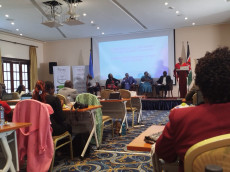- Content creators, artists, and musicians regularly connect with others who share their passions. Whether through digital collaborations, fan interactions, or artwork collectives, they devise areas in which they may be visible, heard, and valued.
For many young people today, art, song, and content creation have become more than hobbies; they're lifelines.
This has been prompted by unemployment, mental health struggles, and societal pressures, which have left many feeling lost and disappointed.
In the past, creative expression was normally confined to galleries, concert events, or community theatres. Today, anyone with a phone can share their creativity. For many youth, this access is liberating. It allows them to bypass gatekeepers and tell their stories in their own voices without waiting for validation from traditional institutions.
It’s entertainment role makes content creation particularly effective.
Content creators, artists, and musicians regularly connect with others who share their passions. Whether through digital collaborations, fan interactions, or artwork collectives, they devise areas in which they may be visible, heard, and valued.
Read More
Financial survival is likewise a key thing riding this fashion. In the face of limited possibilities, many young people turn their innovative skills into profit-generating ventures. Musicians now monetize their craft through streaming platforms, stage performances, or online music sales.
Technology has played a defining role in making this innovative revolution feasible. Cheap smartphones, editing apps, virtual artwork gear, and social media platforms have democratized creativity.












